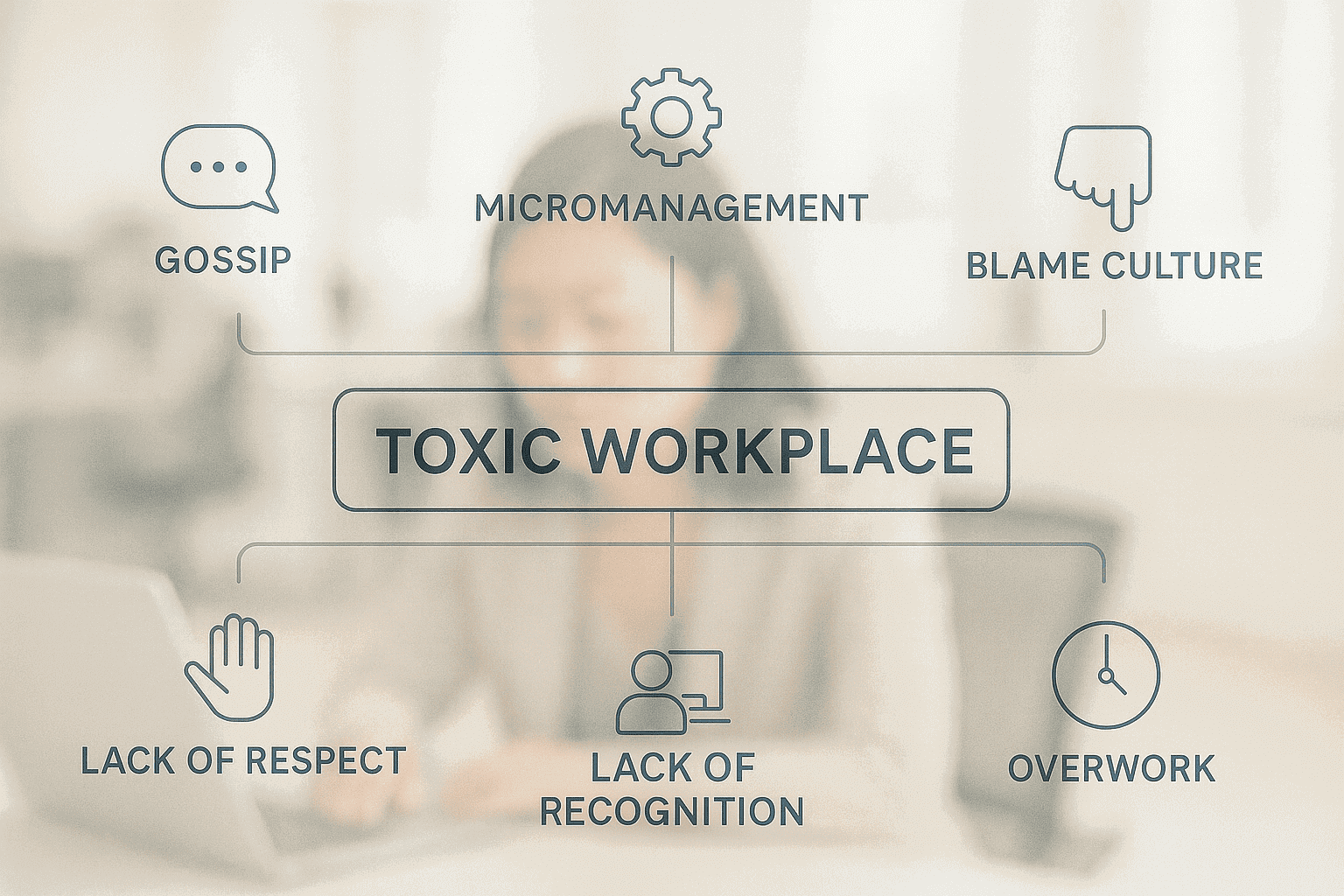Toxic Workplace: How to Recognize It and Protect Your Mental Health

A healthy job can give you purpose, connection, and stability. But when the environment becomes harmful, even the most motivated professional can begin to dread going to work. A toxic workplace isn’t always obvious—it can quietly drain your energy, confidence, and sense of safety. Recognizing the warning signs early and learning how to care for yourself can make all the difference.
As a therapist, I often hear from clients who describe feeling trapped in negative work settings. They start to doubt their abilities, lose sleep, or carry anxiety home each night. Understanding what makes an environment unhealthy—and realizing that it’s not your fault—is the first step toward recovery.
What Makes a Workplace Toxic
A toxic workplace is one where the culture, leadership, or daily interactions create ongoing stress or emotional harm. It’s more than just a bad day or an annoying colleague—it’s a pattern of behaviors that leave people feeling unsafe, unheard, or undervalued.
Typical red flags include:
- Poor communication. Managers ignore concerns or respond with hostility.
- Blame culture. Mistakes are punished instead of discussed constructively.
- Cliques and gossip. Employees form exclusionary groups that isolate others.
- Unrealistic demands. Constant pressure to overwork without appreciation.
- Fear-based leadership. People worry about retaliation for speaking honestly.
Even if these behaviors seem subtle at first, their cumulative effect can erode motivation and mental health over time.
Emotional and Physical Impact
Working in such an environment can lead to anxiety, depression, and burnout. You may notice fatigue, headaches, or difficulty sleeping. Emotionally, you might feel tense before every meeting or second-guess yourself after every interaction.
This ongoing stress can follow you home, making it hard to relax or feel present with family and friends. These symptoms are not weaknesses—they’re your body’s way of signaling that the environment is unsustainable.

Why People Stay
Leaving an unhealthy job can be complicated. Many people stay because they need the income or hope things will improve. Some fear that speaking up will make them a target, while others convince themselves they’re “overreacting.”
But a toxic work environment thrives on silence. When no one challenges destructive patterns, the cycle continues. Recognizing this can help you shift the focus from “fixing yourself” to protecting yourself.
Coping Strategies While You’re Still There
If leaving immediately isn’t possible, there are steps you can take to minimize harm.
- Set firm boundaries. Avoid responding to work messages after hours whenever you can.
- Document issues. Keep notes of concerning incidents in case you need to report them.
- Find allies. Seek out supportive colleagues who share your values.
- Detach emotionally. Remind yourself that other people’s negativity reflects them, not you.
- Practice self-care. Use short breaks, mindfulness, or breathing exercises to reset your body and mind.
Small moments of calm throughout the day can help you maintain a sense of control in an otherwise stressful environment.
Knowing When to Walk Away
Sometimes the healthiest choice is to leave. If your mental or physical health is deteriorating, or if the situation involves harassment or unethical conduct, staying may cause deeper harm. Walking away doesn’t mean failure—it’s an act of courage and self-respect.
Before resigning, make a plan: update your résumé, reach out to your network, and line up potential opportunities. Consider therapy to help you process the emotional fallout of a toxic workplace and regain confidence for your next role.

Rebuilding After Leaving
Leaving doesn’t instantly erase the stress. Many people describe a period of “emotional detox,” where they must relearn how to trust coworkers and managers again. This healing phase is normal. Therapy, journaling, and mindfulness can all help you reconnect with your strengths and redefine what a healthy workplace looks like.
When searching for your next role, pay attention to company culture as much as job descriptions. Ask questions about communication, leadership, and collaboration. Choosing an environment that values empathy and respect will help you rebuild not just your career, but your sense of peace.
Closing Thoughts
A toxic workplace can infiltrate every part of your life, but it doesn’t define you. By recognizing the signs, setting clear boundaries, and taking proactive steps toward healing, you can protect your well-being and reclaim your confidence.
If you’re struggling with the stress or self-doubt that often follows a harmful work environment, you don’t have to face it alone. Reaching out for help is an act of strength, not weakness. Contact me today to start a conversation about your experiences—we can work together to process what happened, rebuild your sense of safety, and create a healthier path forward both professionally and personally.